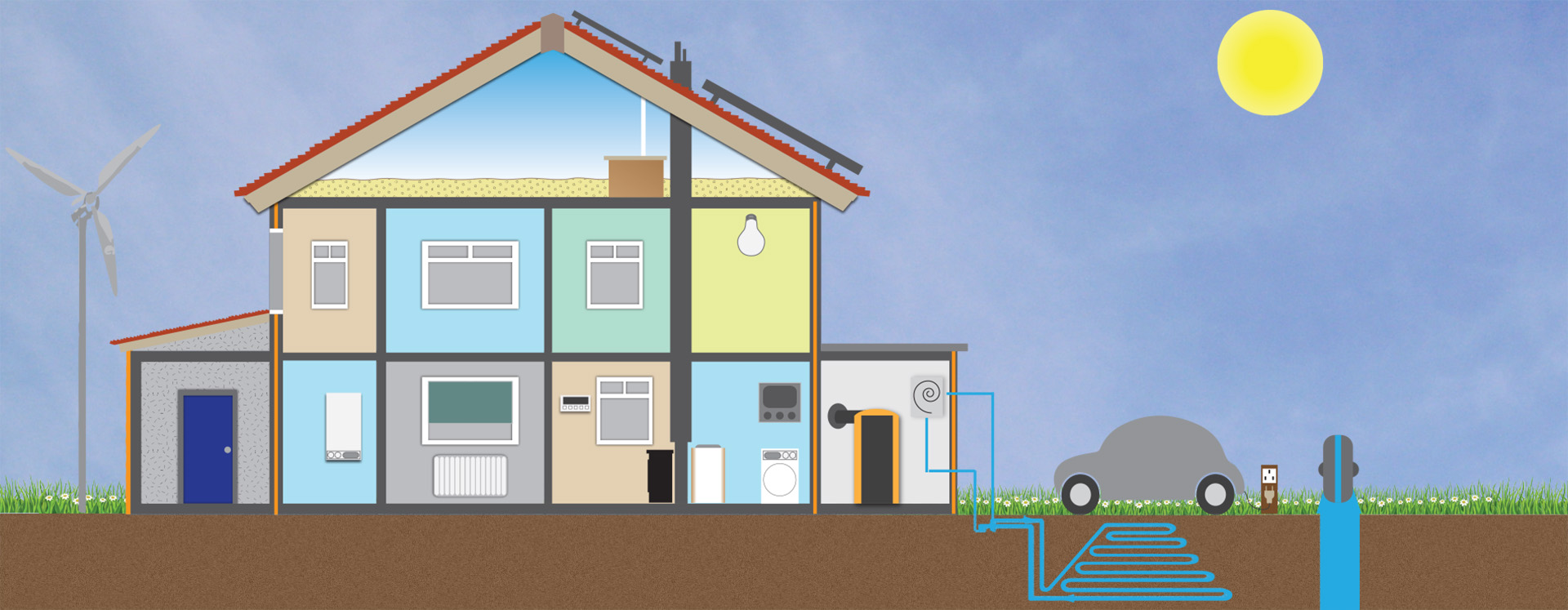The cause of wind
As the sun shines on the Earth it applies different amounts of energy to different areas for reasons such as cloud cover, latitude or differences between land and sea. This causes areas of relatively high and low pressures to form in the earth atmosphere and to even out these pressure differences air must flow from high to low pressure, causing the wind. Because of friction between land and the wind, wind speed is faster and less turbulent as altitude increases.
How wind turbines work
Wind turbine blades work using the same two principles as aeroplane wings. They are slightly angled away from the wind direction and their cross section is aerofoil shaped, like an aeroplane wing, causing air pressure differences across the blades.
Types of wind turbine
Horizontal axis wind turbines (HAWTs) are the most common type of turbine and have evolved from the traditional windmill. They often have two or three blades but some have many tiny blades and are used in areas where wind speeds can be very low for long periods of time.
What affects HAWT power generation
Air density around Wadebridge will be roughly constant through the year so this will have little effect on amount of energy generated.
Blade length to power production follows a square law so if the blade length is doubled then power production goes up by a factor of four.
Wind velocity to power output follows a cubic law so if the speed of the wind doubles then the power generated increases by a factor of eight.
Vertical axis wind turbines (VAWTs) have vertical blades that rotate around a vertical shaft. They are less common than horizontal axis turbines as they achieve a lower efficiency for reasons such as each blade travelling against the wind direction for half of each cycle. However they can utilize wind from any direction at anytime without having to rotate the blades into the wind directions as HAWTs need to. Therefore they are more suited in areas where more turbulent winds are encountered such as urban areas where wind might be relatively gusty and might change direction rapidly and often.
Power generated by wind turbines
Below are two power curves for a large wind turbine (left) and a domestic scale wind turbine (right).
All wind turbines have a ‘cut in wind speed’ which is the lowest wind speed at which the turbines will generate power and all larger wind turbines a ‘cut out wind speed’ which is the wind speed at which they shut down to protect the turbine from damage in high winds. Smaller turbines, in the region of a few kilowatts do not have cut out wind speeds but the aerodynamics of the blades mean they become less efficient at high wind speeds. This is the reason for the drop in power production of both power curves at high wind speeds. The rated wind speed is the maximum power output of the wind turbine. Wind turbines generate electricity between 70-85% of the time because the wind is intermittent and variable. The actual amount of energy generated over a year compared to the unachievable maximum potential energy generated over a year is known as the capacity factor and will typically lie between 28-45% for windy sites.
Limitations
Wind turbines can be very powerful, but as they are very sensitive to wind speed they produce very little power at low wind speeds or none at all. This can be a problem for off grid installations. They also require an area of high enough average wind speed that is not near any obstacles such as trees or buildings which can reduce wind speed. Planning issues can be a problem as they often need to be sited on promontories where wind speed is higher but this increases their visual disruption to the landscape.
Summary
- Wind turbines generate electricity from the wind – as long as it is blowing!
- There are two types of wind turbine – horizontal axis and vertical axis. Horizontal axis wind turbines are the most common and generally the most efficient, though vertical axis can be better in areas with wind turbulence.
- The amount of electricity generated depends on blade length, turbine height and how windy the site is.
- The kW rating of a wind turbine is the maximum power it can generate at any given time at the turbine’s optimum wind speed – it is not what it is expected to generate all of the time.
- You will need planning permission for a wind turbine.
- Sites which are sheltered by other buildings or trees may not be suitable for a wind turbine.

